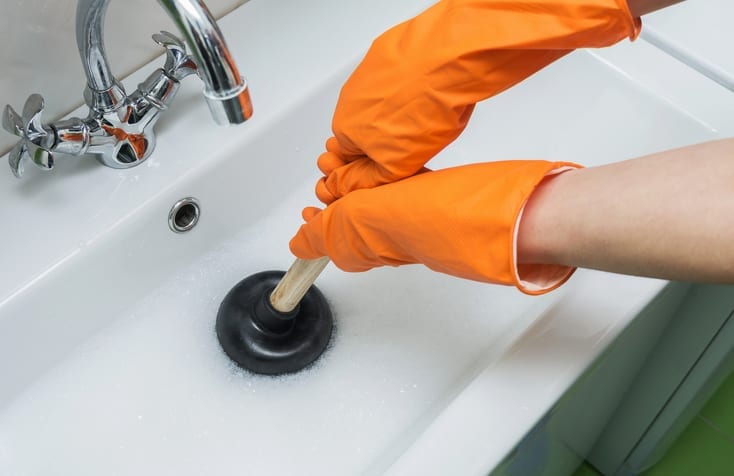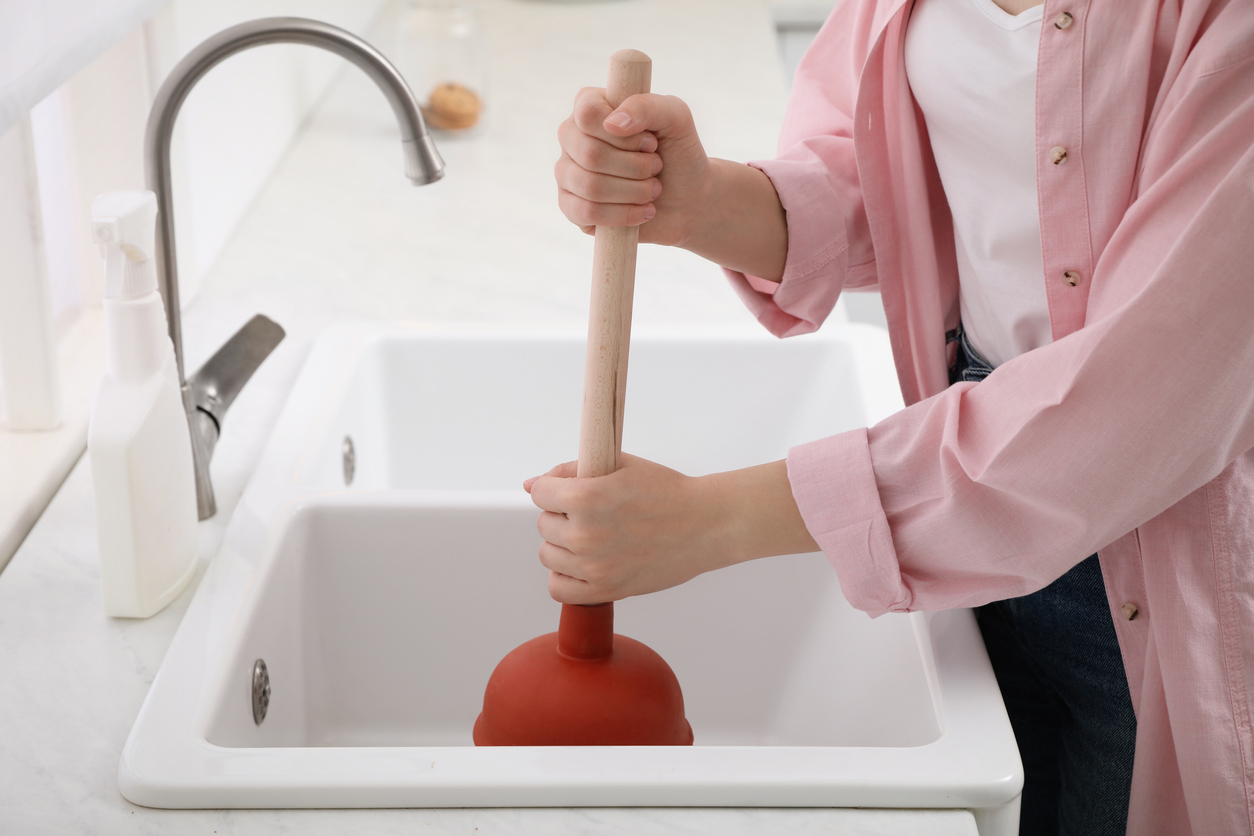Efficient Plungers and Drain Cleaner Strategies: Best Approaches
Efficient Plungers and Drain Cleaner Strategies: Best Approaches
Blog Article
Were you trying to find suggestions concerning How to Use a Plunger to Unclog a Toilet or Drain?

Intro
Appropriate maintenance of household drains pipes is vital for avoiding blockages and making certain smooth water circulation. One of the secret tools in every homeowner's toolkit is the bettor, together with different drainpipe cleansers made to take on persistent blockages efficiently. This short article explores how to utilize plungers and drain cleansers properly to maintain your drains flowing openly.
Area 1: Comprehending Bettors
Kinds of Plungers
There are numerous sorts of bettors offered, each designed for various sorts of drains and obstructs. One of the most common kinds consist of cup plungers, flange plungers, and accordion plungers.
Exactly How Plungers Work
Plungers work with the concept of developing stress and suction to displace obstructions. When properly used over a drainpipe, they develop a vacuum that can take out particles or separate blockages.
Picking the Right Plunger
Choosing the ideal plunger depends on the kind of drain and the nature of the clog. Cup bettors are excellent for sinks and bathtubs, while flange bettors are much better matched for commodes as a result of their layout.
Usual Errors with Plungers
Staying clear of these errors guarantees effective plunging: incorrect seal around the drain, inadequate force, and unclear bordering particles.
Section 2: Using Plungers Successfully
Preparation
Prior to plunging, guarantee the plunger covers the drainpipe totally and creates a tight seal. Clear any kind of noticeable debris around the drainpipe opening.
Strategy
Begin with gentle plunging activities to build suction. Boost pressure slowly, using a constant rhythm. Repeat as necessary until the drain gets rid of.
Repairing Tips
If diving doesn't function, try changing the seal, applying petroleum jelly for a far better seal, or making use of a various type of bettor.
Area 3: Understanding Drain Cleaning Company
Sorts Of Drain Cleaners
Drain pipes cleansers can be chemical or enzymatic. Chemical cleansers utilize solid chemicals to liquify obstructions, while chemical cleaners use natural enzymes to break down organic matter.
How Drain Cleansers Work
Chemical cleansers respond with clogs to liquify them, while chemical cleaners break down natural materials like hair and oil without hurting pipes.
Safety and security Factors to consider
Constantly put on gloves and eye defense when utilizing chemical drainpipe cleansers. Make certain sufficient air flow and follow maker guidelines very carefully.
Eco-Friendly Alternatives
Consider using vinegar and cooking soft drink or enzyme-based cleaners for eco-friendly options that are more secure for pipes and the setting.
Section 4: Making Use Of Drain Cleaning Company Properly
Application Techniques
Pour chemical cleaners directly right into the drainpipe opening. Allow them to help the recommended time before flushing with hot water. Chemical cleansers must sit overnight.
Preventative measures
Avoid mixing various sorts of cleaners, as this can produce hazardous fumes. Never make use of chemical cleaners together with a plunger, as spilling can take place.
Dealing With Stubborn Blockages
For consistent clogs, think about using a plumbing snake or calling an expert plumbing to prevent damages to pipelines.
Final thought
To conclude, comprehending just how to make use of bettors and drainpipe cleaners properly is crucial for preserving healthy and balanced pipes systems. By choosing the right tools and methods, property owners can take on small obstructions and protect against major pipes concerns down the line.
How to Use a Plunger to Unclog a Drain
The humble plunger is a simple yet effective tool for breaking clogs in sinks, tubs and toilets. This handy tool is easy to use. You can make the most of its power if you understand how it works. Ready to dive in? Here’s what you need to know.
Safety First!
Never use a plunger with drain chemicals. Water will splash as you work, and the chemicals can spatter, burning skin and eyes. It’s a good idea to use rubber gloves and wear safety goggles when you work on a clog.
Choose the Right Tool for the Job
Plungers come in two different styles. Sinks, bathtubs and showers require a cup plunger. Like its name suggests, the rubber end is shaped like a cup. Use a flange plunger on toilets. These plungers have a rubber funnel extending from the cup. A plunger needs to be big enough to cover the drain.
Ready, Set, Plunge!
Coat the rim: Coat the plunger rim with petroleum jelly. This helps make a better seal.
Block outlets: Hold a wet rag over nearby outlets such as the overflow vent or the drain in a second sink.
Release air: Insert the plunger at an angle into the water. Water will displace air in the cup. A water-filled cup is more forceful than one filled with air.
Keep the plunger upright: Hold the plunger perpendicular to the drain. Use fast, forceful strokes, but make the first stroke gentle. The first stroke can create a splash if the cup still contains air. Thrust the plunger 15 to 20 times.
Snap off the plunger: The final stroke should be a strong upward motion that ends when the plunger snaps off the drain.
Repeat the process: you may need to repeat this sequence several times. When the water drains away, your work is done. High-five! https://plumbernw.com/blog/how-to-use-a-plunger-to-unclog-a-drain/

Application Techniques
Pour chemical cleaners directly right into the drainpipe opening. Allow them to help the recommended time before flushing with hot water. Chemical cleansers must sit overnight.
Preventative measures
Avoid mixing various sorts of cleaners, as this can produce hazardous fumes. Never make use of chemical cleaners together with a plunger, as spilling can take place.
Dealing With Stubborn Blockages
For consistent clogs, think about using a plumbing snake or calling an expert plumbing to prevent damages to pipelines.
Final thought
To conclude, comprehending just how to make use of bettors and drainpipe cleaners properly is crucial for preserving healthy and balanced pipes systems. By choosing the right tools and methods, property owners can take on small obstructions and protect against major pipes concerns down the line.
How to Use a Plunger to Unclog a Drain
The humble plunger is a simple yet effective tool for breaking clogs in sinks, tubs and toilets. This handy tool is easy to use. You can make the most of its power if you understand how it works. Ready to dive in? Here’s what you need to know.
Safety First!
Never use a plunger with drain chemicals. Water will splash as you work, and the chemicals can spatter, burning skin and eyes. It’s a good idea to use rubber gloves and wear safety goggles when you work on a clog.
Choose the Right Tool for the Job
Plungers come in two different styles. Sinks, bathtubs and showers require a cup plunger. Like its name suggests, the rubber end is shaped like a cup. Use a flange plunger on toilets. These plungers have a rubber funnel extending from the cup. A plunger needs to be big enough to cover the drain.
Ready, Set, Plunge!
Coat the rim: Coat the plunger rim with petroleum jelly. This helps make a better seal. Block outlets: Hold a wet rag over nearby outlets such as the overflow vent or the drain in a second sink. Release air: Insert the plunger at an angle into the water. Water will displace air in the cup. A water-filled cup is more forceful than one filled with air. Keep the plunger upright: Hold the plunger perpendicular to the drain. Use fast, forceful strokes, but make the first stroke gentle. The first stroke can create a splash if the cup still contains air. Thrust the plunger 15 to 20 times. Snap off the plunger: The final stroke should be a strong upward motion that ends when the plunger snaps off the drain. Repeat the process: you may need to repeat this sequence several times. When the water drains away, your work is done. High-five! https://plumbernw.com/blog/how-to-use-a-plunger-to-unclog-a-drain/

As a keen person who reads about Tips on How to Effectively Use a Plunger, I figured sharing that chunk was worth the trouble. Sharing is caring. Helping others is fun. Thanks for being here. Please come visit our site back soon.
Quote Report this page